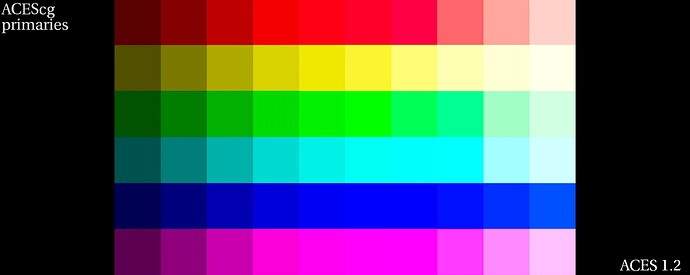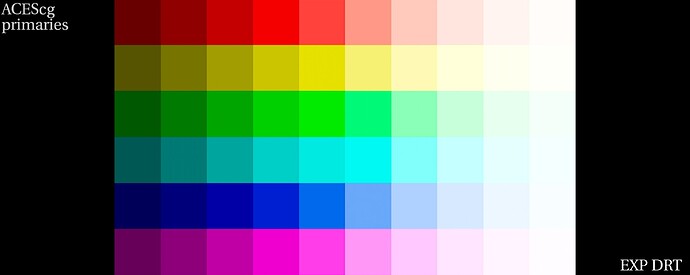Thanks for the reply Garrett. I think this kind of conversation is exactly what this group needs. Thanks for being here and answering my silly questions.
I can relate to your question because the first question I ask every year to my students is : is your short film going to be lit like a camera or an eye ? We do full CG short films and I like to have this clear distinction when talking about lighting with them.
There is a great pdf by Dave Walvoord (from Dreamworks Animation) who speaks about camera vs eye for full cg lighting and working with Roger Deaking. And also the website Cambridge in colour has this article about Camera vs The Human Eye. I really like the image with the sea in the article and the concept of mental image.
Anyway I digress completely here. But this is such an interesting topic. ![]()
I think our fundamental difference is that :
- I see the path to white as a way to deal with display limitations.
- You see the path to white as a filmic response.
Would that be a fair summary ?
Thanks for the definitions. I think it helps to make this thread a bit clearer. I also think we agree that the current ACES Output Transforms are not hue-preserving and making the new ones be would be an improvement.
No worries for the underexposed image but it kind of caught me off guard. I wondered what was the point you were trying to make. The actual person who took the red xmas lights is present on acescentral. @martin.smekal We could eventually ask him to look at his image through the ACES Output Transform and through the naive" DRT to see which one would respect better the scene intent.
Indeed, the bulbs are clipped to white which is quite disappointing and makes me love my full CG renders even more. ![]() I always tell my students : an overexposed sky is actually blue if you decrease the stops. And by doing this, the lens effects (such as glow) will react much better and get the proper colour. There was a shot on a short film we did where the overexposed sky was just an overexposed grey. The glow was “neutral” and looked weird/wrong.
I always tell my students : an overexposed sky is actually blue if you decrease the stops. And by doing this, the lens effects (such as glow) will react much better and get the proper colour. There was a shot on a short film we did where the overexposed sky was just an overexposed grey. The glow was “neutral” and looked weird/wrong.
I have made these two renders just to show the difference between ACES and the naive DRT :
What would you expect to see here ? To be “stuck” on full colour emission rather than going to white ? I don’t think I am able to express it better than Troy honestly :
[…] we are forced to take the convention of the camera capture and render that convention under the convention of a limited display or print.
Finally I guess you have watched Jed’s videos where he shows how the values collapse on the display limit and how he scales the gamut to avoid it. It literally blew my mind since it is so easy to see and comprehend (in Nuke’s viewer).
That’s my tuppence,
Chris
PS : We had a one hour meeting at the studio looking at the images and examples Jed provided. We are 100% on board with the hue-preserving DRT. Can’t wait to see it complete ! And that’s the official answer from the studio. ![]()

